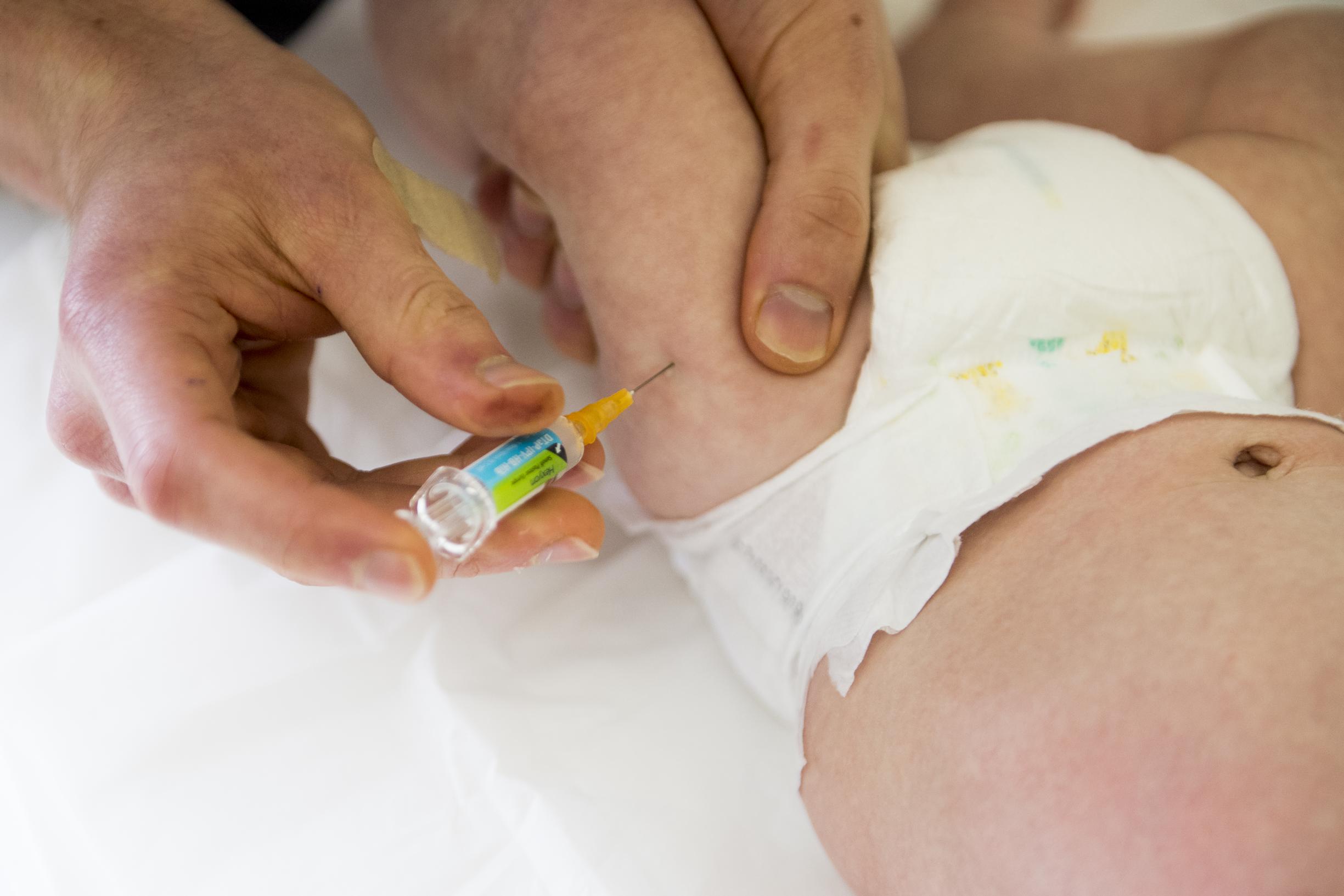Flanders remains an extremely well-vaccinated region. This is apparent from a new study by the University of Antwerp and the KU Leuven. ‘The extra corona work had hardly any impact on the vaccination rate,’ says Health Minister Wouter Beke (CD&V).
–
The vaccination coverage study looks at how well certain target groups are vaccinated against, among other things, measles, diphtheria, flu or HPV. The previous study dates from 2016. This study, from 2020, analyzed toddlers, adolescents, mothers who gave birth, health professionals and those who work with children. The corona vaccinations have nothing to do with the study, most of the data was collected before the start of the corona vaccination campaign, so an impact is not measurable, according to the researchers.
1 Are children in Flanders properly vaccinated?
This is certainly the case for the recommended free vaccines for young children, such as against polio, whooping cough and measles. The vaccination coverage for this category remained stable with results between 92.9 and 96.1 percent, almost identical to the figures for 2016. There was a significant increase for the recommended, but not free, vaccine against the rotavirus. That figure rose from 89.7 to 92.4 percent.
Adolescents born in 2007 also had a high vaccination coverage. 92.6 percent had been vaccinated against diphtheria, tetanus, whooping cough and polio, the same result as in 2016. There was also a slight increase for both doses of the vaccine against measles, mumps and rubella (rubella). The threshold of 95 percent, recommended by the World Health Organization (WHO), is just short of being met. ‘Although there is still under-registration,’ explains the study’s promoter Kirsten Maertens (UAntwerp).
In general, she says, the willingness to vaccinate is very high. ‘Only 4.2 percent of the parents of incompletely vaccinated young children indicated that they deliberately refused the vaccination. Parents of adolescents mainly cited practical reasons for not vaccinating, such as postponement due to the pandemic.’
2 Are adult target groups also well vaccinated?
Pregnant women are advised to have a vaccination against flu and whooping cough. Among mothers who have recently given birth, there has been a ‘remarkable increase in vaccination coverage’, the scientists conclude, with 85 percent for whooping cough compared to 69.3 percent in 2016. For the flu, it was 62.3 percent, compared to 47.2 percent in 2016. ‘Partners who have recently given birth are also significantly more likely to be vaccinated against whooping cough.’
Healthcare workers are being vaccinated more against the flu. Vaccination coverage rose by about 30 percent in both residential care centers and hospitals. In hospitals, 84.6 percent indicate that they are vaccinated. In residential care centers this is 78.3 percent. The increase is attributed to good vaccination campaigns, but remarkably also to the media attention due to the corona pandemic.
The relatively high flu vaccination rate is not being achieved among childcare workers. In 2020, this was 39.6 percent among people who work in a daycare center. For childminders this was even lower, at 31.9 percent. A whooping cough vaccine was taken by two thirds of them, they indicated. That number is even higher for those who work in hospitals with children. There, 78.1 percent indicated that they had received that vaccine.
3 For the first time, there are also results of HPV vaccination in boys. What do they teach?
In the 2019-2020 school year, boys also received an injection for the first time against the human papilloma virus, which can be transmitted through sexual contacts and can lead to cancer of the uterus, anus or penis, among other things. ‘The vaccination rate for girls is 92.3 percent. It is about 5 percentage points lower for boys, but that is comparable to the vaccination rate for girls at the start of the campaign. The campaign for boys also turns out to be a success without a doubt.’
4 What could be better?
A point for attention remains that many vaccines in children continue to be administered too late. In the first year of life, 55 percent receive the necessary injections strictly on time, but afterwards there is a delay. The Flemish Vaccinations Action Plan sets the limit at 80 percent.
In particular, it has been found that nearly 15 percent of young children still receive only a first dose of the measles, mumps and rubella vaccine after the recommended age of 12 months. “That poses a risk, in light of the recent measles outbreaks in Belgium,” a warning sounds.
The researchers also find that 2 out of 10 children do not have vaccination documents at home, an increase of about 8 percent compared to 2016. This obviously stands in the way of a good follow-up.
In view of the low vaccination coverage against flu, there is still much to be gained among health professionals. ‘Doctors have the most positive attitude, healthcare professionals are full of myths. Nursing staff, among others, is also more difficult to reach. Additional information campaigns for specific groups and a personal approach are important here,’ says Maertens.
In general, the researchers warn that repeated information campaigns about vaccines are necessary. “The role of social media in spreading (mis)information about vaccination also needs to be better understood in order to respond and respond to it appropriately,” they conclude.
–


